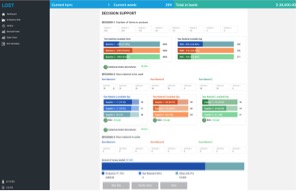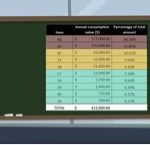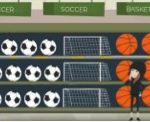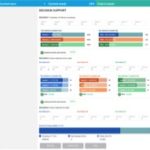Gamified Business Simulator for Teaching Logistics Concepts
Designed by Tecnologico de Monterrey for Industrial Engineering and Other Industries
As a growing number of companies move the role of logistics out of the stock room and into the boardroom, universities around the world are beginning to teach the concepts behind this new professional discipline. And in making them easier to grasp, Tec de Monterrey, in Mexico, has created a trailblazing video game called Logistic Simulator or LOST for short.
LOST uses twelve different game scenarios, grounded in real-world problems, to provide hands-on virtual practice in applying such key logistical concepts as inventory and production management, scheduling, transportation, and quality.
The simulation starts with a video outlining the specific challenge to be solved along with a file of pertinent data for students to use in making logistical decisions around a variety of production and distribution variables from market demand and materials cost to delivery and operating expense. Before they begin, students are asked to define their strategies for improving the company’s bottom line, which are then stored in a database and tracked against actual decisions made along the way.
Once their plans are in place, they can start playing the game using their expert knowledge to develop forecasts, cope with production bottlenecks, set up inventory systems, and implement transportation solutions with the goal of improving profitability.
As the game progresses and students accomplish their objectives in one scenario they are given a new one to tackle with the option of running the entire exercise as many as three times to increase their scores. And to keep them even more engaged, students earn trophies, while using a leaderboard to post their highest score.
Instructors use the massive amounts of data this game generates to refine scenarios and strengthen learning outcomes. At the same time, students can submit their own recommendations for improvement through an online suggestion box.
Having now provided hands-on logistics training for business and engineering students, LOST has become an increasingly popular digital learning tool with plans afoot to develop additional scenarios for finance, marketing, and supply chain management courses.
LOST, an acronym for Logistic Simulator, is a series of gamified simulators, created by Ernesto Armando Pacheco Velázquez and his team at Tec de Monterrey. His vision was to find a better way to teach students to develop logistical concepts and understand consequences of their decisions across a company.
 Through video, a problem faced by a company is presented to students. Twelve different scenarios have been designed around topics such as forecasts, inventory, production management, scheduling, transportation and quality. The first simulator is simple with each subsequent scenario growing more difficult until they fully reflect a company’s complexities.
Through video, a problem faced by a company is presented to students. Twelve different scenarios have been designed around topics such as forecasts, inventory, production management, scheduling, transportation and quality. The first simulator is simple with each subsequent scenario growing more difficult until they fully reflect a company’s complexities.
The student receives a set of pertinent data needed to help make logical decisions including demands, costs of raw materials, delivery, and operating costs. Students then must define a feasible production plan that will help the company gain higher profits. A series of videos set the stage for students preparing and guiding them through the process.
Prior to beginning the simulation, students are asked to define their strategy. It is stored in a database, which allows instructors to monitor consistency between decisions made in the simulator and their strategy. Students are faced with challenges in which they must make forecasts, cope with bottlenecks in production, manage inventory and transportation, and use linear programming.
Gamification Components
As the simulation progresses and students achieve goals, new scenarios are given each containing variables that prompt them to make logistical decisions. Students earn trophies and compare their progress and success through a leaderboard. In each game or simulation episode, the instructor sets a deadline and students go through the simulation up to three times providing them the opportunity to make varying decisions and improve their score. The highest score is tracked.
If any student does not reach the minimum score that has been set, then those students with the highest scores become their mentor for that scenario. The extra work allows each student to earn more rewards along the course of the simulator game.
Faculty use the data gathered to observe the main mistakes student make when playing the simulator. They can determine which variables students consider most important and which go unnoticed. They are tracking the most successful strategies and monitoring how students are applying knowledge gained in class. Based on results, resources that provide didactic support are being designed to strengthen learning.
The Creative Process for Simulation Design
At the beginning of this project, there were three fundamental objectives: 1) to teach students of the industrial engineering career how to make decisions in more complex systems; 2) increase motivation in this type of subject to promote research and self-learning; And 3) based on the results obtained, understand how people made decisions.
The first version of the game was programmed on an excel file format that only had decision tables and showed to students the results obtained after each of the decisions they made. However, after the first version was created, Ernesto discovered a tool created by Arizona State University called the Decision Theater that allowed students to visualize solutions to complex problems.
This discovery drastically changed the scope and objectives of the project: the game needed a graphical interface to allow students to observe their inventory levels in factories and stores, product demand behavior, store occupancy levels, routing, etc. With this objective, a multidisciplinary team was formed, this project involved students and teachers from Computer Engineering, Digital Animation and Design. Using ASU’s solution, the game was completely transformed.
Gamified Business Simulator Expands to Include More Schools
The new interface gained attention of students from the School of Business sparking interest in using the new simulator. This resulted in the creation of another team with professors from the areas of marketing, finance, international business and accounting to work on creating new scenarios for the game.
While the game was first used in the beginning with students of industrial engineering at the Tecnologico de Monterrey -Campus Ciudad de Mexico, adoption has spread across multiple campuses including Campus Guadalajara, Campus Puebla, Campus Toluca, Campus Tampico, Campus León, Campus Sonora Norte, Campus Queretaro, Campus Chiapas and Campus Monterrey. The software is now used in the School of Engineering, the Business School, the Graduate School and the School of Continuing Education. Over 3000 student scholars have benefited from this simulation game.










